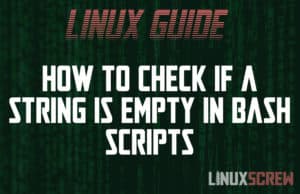How to Get the Path to the Current Bash/Shell Script
This short tutorial will demonstrate how to get the path to the currently running Bash/Shell script in Linux, and provide a code example. Getting the path to the current script is useful if you have other files in the same directory as the script that you want to access when calling the script from elsewhere. For example, you may have a script that plays music located with your music files, and have a second script on your Desktop that calls it. The first script will … Read more






![Use wc to Count the Characters/Words/Lines [Linux/Bash] 6 Bash wc command count words](https://cd.linuxscrew.com/wp-content/uploads/2022/08/Bash-wc-command-count-words-300x194.jpg)

![How to Use while Loops in Bash/Shell Scripts [Examples] 8 Bash while Loops](https://cd.linuxscrew.com/wp-content/uploads/2022/08/Bash-while-Loops-300x194.jpg)

